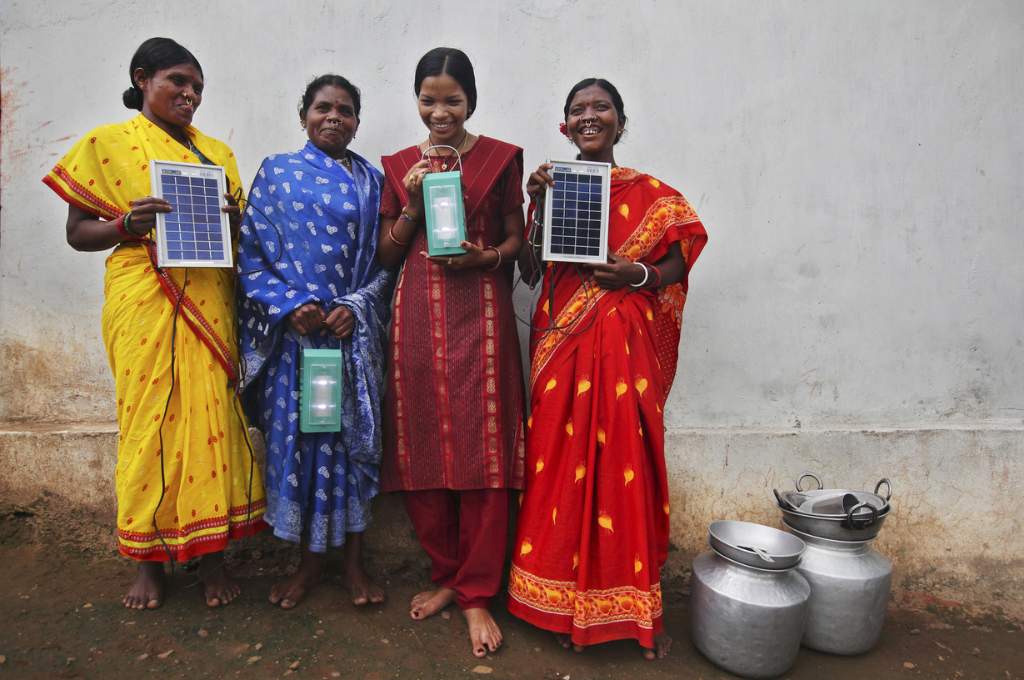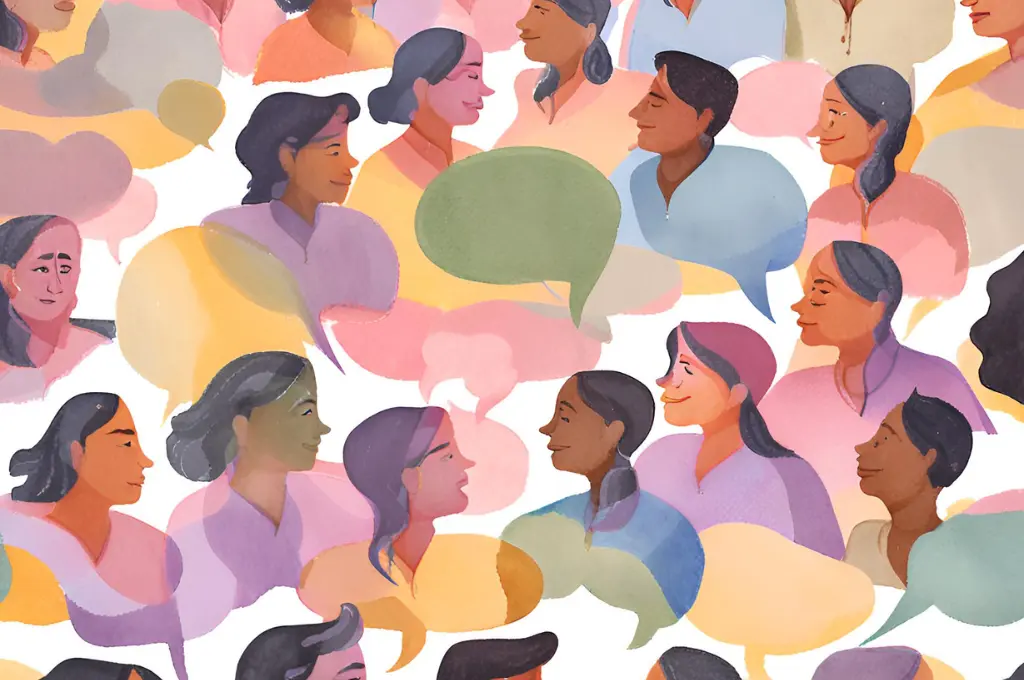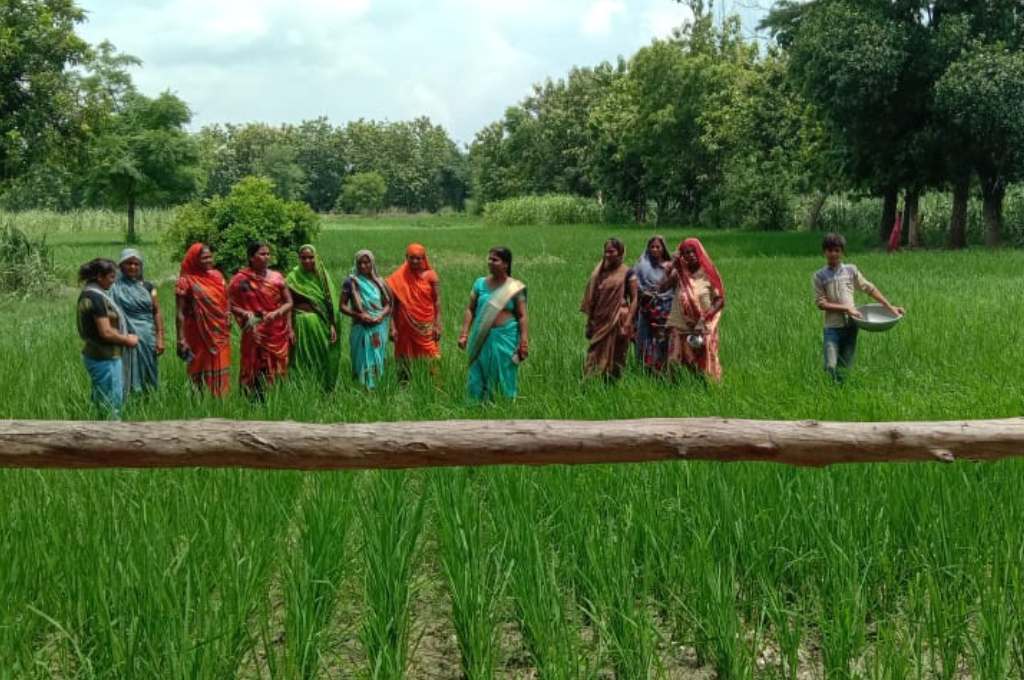The climate crisis, one of the biggest calamities of our time, is not gender-neutral. Women are disproportionately impacted by climate change due to a host of reasons including greater dependence on natural resources for their livelihoods, absence of participation in public decision-making, and limited access to land. However, solutions designed to address the crisis often exclude women.
Women experience climate change in different ways
Globally, 80 percent of the people displaced by climate change are women. Women also face higher mortality during extreme weather events, according to studies by WHO. In India, women in rural and urban areas experience the impact of climate change in significant but different ways as well.
In rural areas, for instance, collecting water for drinking and household needs is primarily a woman’s responsibility. Uthara Narayanan, founder of Buzz Women—a nonprofit that provides rural women with access to knowledge, skills, and tools—explains that depleting groundwater resources have become a source of mental stress for women. “They are constantly worried about where to get water from and the money spent on acquiring it for their families and for agriculture, and having to ration water usage,” she says. The excessive and unprecedented rains in several parts of the country—which led to loss of crops in the last two years and subsequent debt—has also added to their stress, she notes.
Women in urban spaces face similar mental stress due to overheating and waterlogging, which are among the most pronounced impacts of climate change in cities. During the monsoons, crowded urban areas—particularly slums—experience frequent and heavy flooding. Due to the lack of proper infrastructure, toilets are sometimes rendered unusable in such conditions. While men can still relieve themselves outdoors, this is often difficult for women to do.
Moreover, flooding usually leads to the spread of diseases such as dengue, malaria, and chikungunya. This increases the mental and physical burden on women as when family members fall sick, it is usually the woman’s responsibility to look after them. “Cleaning up and repairing the damage caused by flood becomes a woman’s job. This coupled with the increased burden of care for family members who take ill prevents her from engaging in economic activities for that period, thus impacting her income,” says Bijal Brahmbhatt, executive director of Mahila Housing Trust (MHT), a nonprofit that works on the intersection of gender and urban development.
There is a lot of cognitive burden that women experience due to climate change that men do not.
Because of the way houses are built in cities, ventilation is yet another problem that aggravates heat conditions in the home, and affects women uniquely. Bijal explains that since women in the informal sector use their homes to conduct economic activities, their health worsens and productivity decreases due to the effect of overheating. “These impacts are difficult to measure, and cannot be compensated for, but are all-pervasive. There is a lot of cognitive burden that women experience due to climate change that men do not,” adds Bijal.
Despite this increased burden, Bijal says that women from lower income groups in urban India do not pay attention to the climate crisis because they are focused on survival. “Every day is a struggle. They understand the impact of disasters like earthquakes or flooding but if it’s heatwaves or water-borne diseases, they don’t think too much about it,” she says. Bijal adds that the idea of a crisis seems too far-fetched to them, and this thinking holds true for the urban middle and upper classes as well. “We spend a lot of time explaining to the women that the problem is already here and it is only going to get worse. But we will need to invest more energy and time to get people to comprehend the seriousness of it,” she says.
In rural India though, women seem to have been quick to identify the impact of climate change on their lives. Uthara says that her team was initially sceptical about working with poor rural women and doubted their ability to understand the impacts of climate change. But the women proved them wrong. Since they experience this on a day-to-day basis, they were eager and fast learners, quickly grasped the importance of climate change, and were moved to act.
“They immediately connected the problem to its effect on the next generation, and worried about what inheritance they would leave behind for their children. ‘If I have to walk so far for water and also spend money to buy it, imagine the cost my daughter will have to pay, both in terms of effort and money, when she grows up.’ When we would talk to them about financial literacy, we realised that they felt the money was still the husband’s responsibility. But when it comes to water, food, and health, the women own the problem and feel responsible for the solutions as well,” she says.
Women are quick to adapt to the crisis
Having understood the enormity of the problem, Uthara adds that rural women have been developing measures to adapt to this change.
Recycling water is one such practice. Uthara explains that by connecting a channel from their kitchen to the backyard, women have started utilising the wastewater from the kitchen to grow fodder for their cattle. They have also started reverting to older agriculture practices, minimising the usage of pesticides, and rotating crops to retain the nutrient value of the soil.

Bijal explains that women are compelled to explore simple and more affordable means of adapting to the crisis because many technologies that aid in adapting to climate change such as air conditioners are not made keeping the poor in mind.
For instance, to prevent damage from flooding and waterlogging, women will build a short wall in front of their homes—this will stop the water from coming in. “If they have money, and can take a loan, they will elevate the plinth of their house so that it is higher than the street level. Similarly, they will apply chuna (calcium oxide) on the roof of their homes to keep them cool during summers,” she adds.
Bijal also explains how the adaptation solutions that women adopt in their individual capacity can become mitigation when implemented at scale. “In most cases, what we see women do at a personal and household level is adaptation—for instance, putting up cool roofs in a house to help cope with heatwaves. But when this is adopted at a city or state level, the same adaptation exercise can become mitigation. Because cool roofs across the city reduces consumption of air conditioning, which in turn reduces carbon emissions,” she says.
The general perception, however, is that women are mostly playing catch-up, and focusing on adaptation as the climate crisis hits them and their families. Little attention is paid to the strategies and models that they are part of, which are beginning to play a critical role in climate mitigation.
Women must be part of mainstream efforts around mitigation
Akila Lean, head of partnerships and communications at Industree, believes that women are and can be valuable ecosystem players in the climate positive story, especially when collectivised. Industree is a nonprofit that works at the intersection of equity, climate, and gender (ECG) to help women build sustainable livelihoods. She adds how women in collectives working on nature-based solutions are already contributing to carbon sequestration and mitigation efforts. “We must now prepare them to be part of global climate positive value chains”.
Akila cites the example of an ESG-compliant bamboo project in Maharashtra that will help sequester carbon dioxide in the atmosphere to the tune of 20,000 tons annually. “Despite being one of the largest producers of bamboo, India’s bamboo products are all still imported. This is because we don’t produce FSC-certified bamboo, which refers to bamboo grown on private land.” By encouraging women farmers to grow bamboo on unused areas of their land, India can produce bamboo-based products, she adds. Industree’s work in bamboo, therefore, plays the twin roles of livelihood generation for women as well as climate mitigation.
Women can, and are, playing a critical role in mitigation.
Their other women collectives also manufacture various green products such as hand-woven baskets and siali leaf plates that replace single-use plastics. “Right now, we only seem to be focusing on women as passive recipients of climate change, but it’s time to change the lens. They can, and are, playing a critical role in mitigation. More importantly, they have the potential to enhance their incomes and be part of the mainstream going forward,” she says.
Uthara agrees that women’s participation in mitigation efforts will not only aid climate action but also present alternate livelihood options for them.
She points to the increasing rural consumption of FMCG products, such as packaged food and household goods, which has resulted in a sharp rise in non-biodegradable waste in villages. This large-scale consumption and poor systems for disposal of plastic, which is contributing to the climate problem, however, could be an opportunity for women.

According to Uthara, if women in villages start making products that could be sold and consumed locally as well, not only would it generate income but it would also reduce the carbon footprint generated by the import of large-company, mass-manufactured goods.
Buzz Women has been experimenting with this idea of localised production and consumption. They spoke to Pakshantar in Delhi, a company that sells tooth powder in urban India, and learned about their formula. “We then trained women in Arakere, a village in Karnataka’s Tumkur district, to make tooth powder using local ingredients, helped them design the packaging, and enabled local sales. This got me thinking that maybe there are other products with sufficient local demand that could be made by women,” says Uthara. She zeroed in on cleaning products such as powders and detergents because people aren’t wedded to any brands, and most often women make the buying decision on these products.
Bijal thinks that there is a different kind of opportunity for women when it comes to the substantial amounts of waste that continues to be generated. “If women can get involved in waste conversion and management as a business opportunity, not only does it provide them an income but it also helps solve for the environment. The government programme on urban forestry is also an opportunity if we can figure out how to involve women SHGs in developing, maintaining, and taking care of the urban forestry and compensate them for these services,” she says.
Recognising women as drivers of climate solutions
Existing structural inequalities limit women’s roles as problem solvers in addressing the crisis on hand. However, understanding how women are dealing with it can be a crucial step in developing more inclusive climate solutions. Here are some ways this can happen:
1. Change the narrative from victim to influencer
Both Bijal and Akila say that it’s time to change the narrative—that we must stop thinking of women as only victims of climate change, which is basically the overarching conversation at forums in the Global North. For while this may be true, there is more to it.
Women have the potential to drive mitigation efforts. They are already taking the lead in adapting to the bruising effects of climate, but what is being overlooked in the global narrative is the role they can play in substantially slowing down the climate crisis. The question we all need to ask is, how can we equip them with the tools and capabilities to do more of that?
2. Create a simple shared vocabulary
Uthara talks about how important it is to create a vocabulary for climate change that women can relate to in their day-to-day lives. She says that the climate language used by policymakers and think tanks alienates most people, especially women.
“We need to move away from technical, complex vocabulary such as climate change mitigation and adaptation because it doesn’t help women and their families who are struggling to make ends meet in understanding it and its implications on their lives,” she says. Therefore, in addition to providing the right climate-related information and tools locally, can governments and civil society organisations also attempt to explain climate in everyday terms to citizens?
3. Listen to the women, and scale their solutions
MHT realised that if they only work with women at the household level, it wouldn’t help solve for climate change in the long run. The organisation has therefore been providing scientific training to groups of women so they can work with local governments on developing city heat action plans. This is important because even as we are seeing various think tanks and research organisations emerging to help cities plan, what is missing is the inclusion of people, especially the ones who contribute the least to climate change but get impacted the most.
She says some of this might be changing slowly. With the National Disaster Management Authority of India declaring heat as one of the key disaster areas, cities have been encouraged to make action plans. However, implementation might be a challenge because city administrations don’t have the funds or the capacity for it. “It is therefore important for local communities to keep applying pressure. This is where women’s groups play a key role—when they have a seat at the table, along with knowledge on the issue, they can hold the government accountable while co-creating solutions to the problem and helping in the implementation,” Bijal says. Jodhpur is an example of MHT women working with the local city administration and a technical partner (National Resource Defence Council) to develop a city heat action plan and act on it.
Livelihoods isn’t the only lens one must apply when talking about women and climate.
Akila reiterates the importance of women having a seat at the table. She says that livelihoods isn’t the only lens one must apply when talking about women and climate. “It is important to ensure that women have a voice too. And that starts with helping them build awareness of themselves and their capabilities. And once they are aware, especially as a collective of hundreds of women, they end up having a voice, and rural society improves,” she adds. This collective power and voice also gives them greater bargaining power when they engage with large corporations to become part of their supply chains.
In conclusion, identifying and adopting initiatives that solve gender-specific impacts of climate change is essential. And we must create an enabling environment for women to take the lead in developing solutions for problems that impact them the most.







